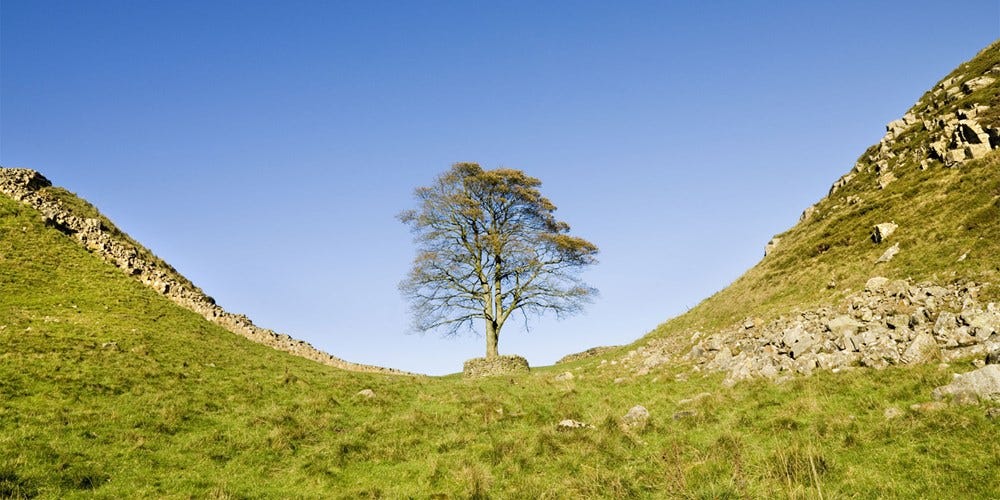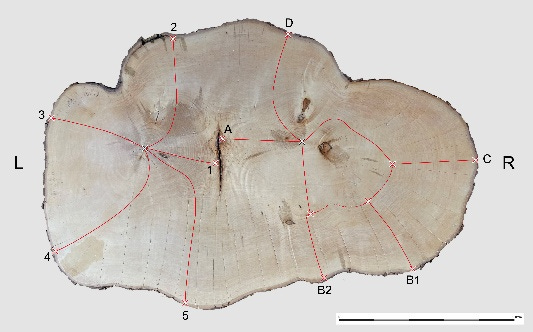Science reveals the true age of Sycamore Gap tree
The iconic and beloved Hadrian’s Wall sycamore lived for over a century before its destruction. Tony Henderson reports.

The famous Sycamore Gap tree in Northumberland was at least 100 to 120 years old when it was illegally felled, new research suggests.
It probably appeared in the landscape in the late 19th century or earlier, says Historic England.
The dendrochronological - tree-ring counting - investigation by the organisation’s national Investigative Science Team was carried out after the tree was illegally felled in September 2023.
The investigation is the first research into the age of the tree to have scientifically analysed a sample of the tree itself.
By counting the sequence of tree rings taken from a cross-section of the felled part of the tree, the researchers were able to arrive at an estimated overall count of 100–120 growth rings for the two main stems.
Each ring typically indicates one year of growth, suggesting the tree is at least 100 to 120 years old. Crucially, this represents the age of the two main stems represented in the section of the tree being analysed, which was around one metre off the ground.
The oldest rings, representing the first years of the tree’s life, would be lower down in the base of its trunk, suggesting it was first planted in the late 19th century.
A slice from the entire cross-section of the tree was cut from the bottom end of the felled trunk, securely wrapped and carefully transported to Fort Cumberland Laboratories - Historic England’s national science facility in Portsmouth.
To prepare the sample for scientific dating, its surface was first levelled, before being sanded in stages to the highest grit available without tearing its surface fibres.
The sycamore’s wood was recorded as in good condition, with a very pale white or cream colour.
A distinctive feature is a line of ‘internal’ bark in the middle, which indicates the sycamore was at one time multiple individual trunks which then fused together, the two main stems fusing when they were around 30 to 35 years old.
The cross-sectional slice of the tree used for the scientific analysis has now been stored at Fort Cumberland. It is expected to be added to the Historic England National Wood Collection, and made available for potential future research.
Zoë Hazell, senior palaeoecologist in Historic England’s Investigative Science Team, said: “It has been a privilege working with colleagues on such an iconic tree and being able to contribute to our knowledge and understanding of its history in the landscape.
“Retaining the slice in HE’s National Wood Collection will ensure that it is kept safe for the nation.”
Cathy Tyers, dendrochronologist in Historic England’s team, said: “Historic England’s analysis of the Sycamore Gap tree was different from my usual work which focuses on historic buildings and archaeological sites.
“I hope that this research adds further to its fascinating story and contributes to its remarkable legacy.”




